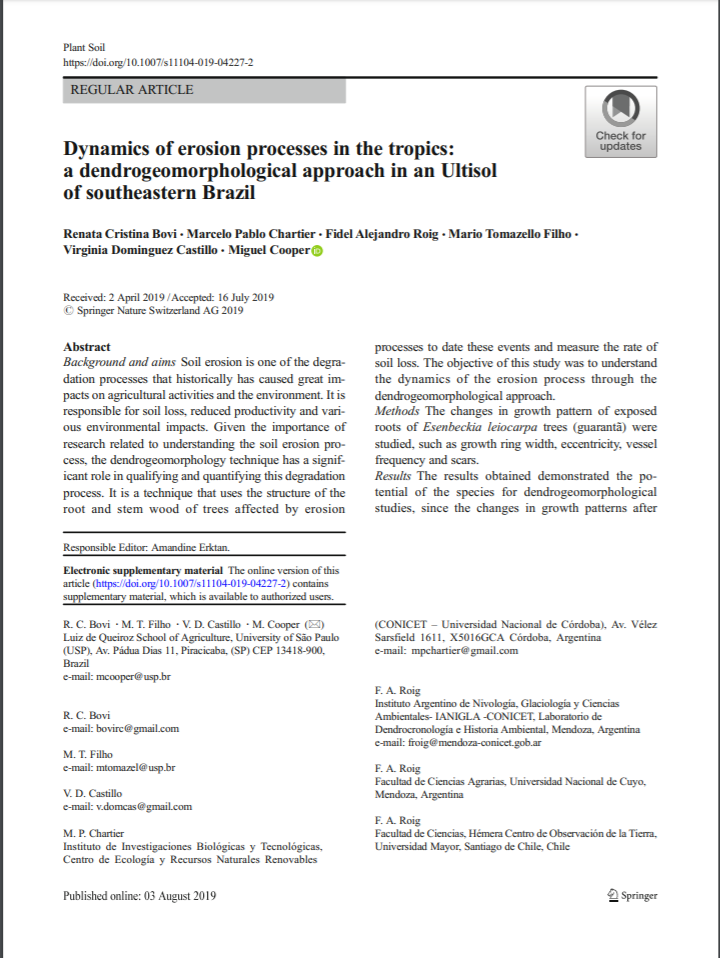Dynamics of erosion processes in the tropics: a dendrogeomorphological approach in an Ultisol of southeastern Brazil

Fecha
2019Autor
Alejandro Roig, Fidel [Univ Mayor, Fac Ciencias, Hemera Ctr Observac Tierra, Santiago, Chile]
Bovi, Renata Cristina
Chartier, Marcelo Pablo
Tomazello Filho, Mario
Castillo, Virginia Dominguez
Cooper, Miguel
Ubicación geográfica
Notas
HERRAMIENTAS
Acceda a títulos restringidos
¿Cómo descargar?Resumen
Background and aims Soil erosion is one of the degradation processes that historically has caused great impacts on agricultural activities and the environment. It is responsible for soil loss, reduced productivity and various environmental impacts. Given the importance of research related to understanding the soil erosion process, the dendrogeomorphology technique has a significant role in qualifying and quantifying this degradation process. It is a technique that uses the structure of the root and stem wood of trees affected by erosion processes to date these events and measure the rate of soil loss. The objective of this study was to understand the dynamics of the erosion process through the dendrogeomorphological approach. Methods The changes in growth pattern of exposed roots of Esenbeckia leiocarpa trees (guaranta) were studied, such as growth ring width, eccentricity, vessel frequency and scars. Results The results obtained demonstrated the potential of the species for dendrogeomorphological studies, since the changes in growth patterns after exposure allowed to date the first year of root exposition. Conclusions The dendrogeomorphology technique proved to be effective in understanding the process dynamics of complex systems, such as the opening of permanent and ephemeral gullies. In addition, it is effective in inferring soil loss rates.
Coleccion/es a la/s que pertenece:
Si usted es autor(a) de este documento y NO desea que su publicación tenga acceso público en este repositorio, por favor complete el formulario aquí.